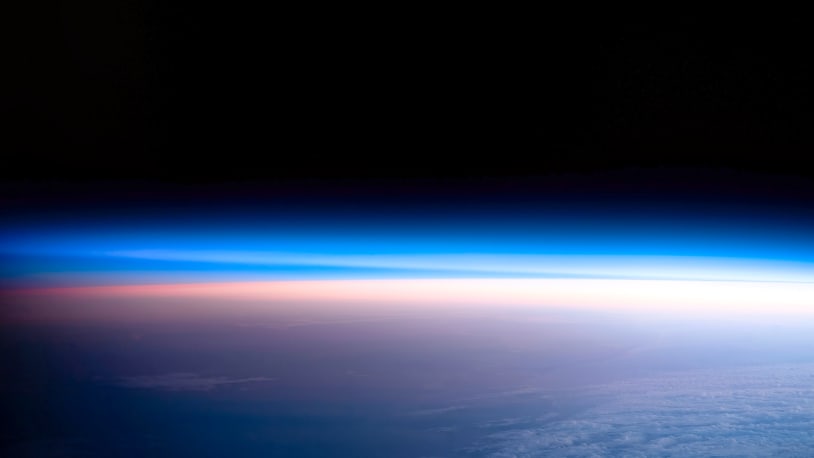
The paradox of atmospheric cooling
An unexpected consequence of climate change known as upper atmospheric cooling has finally been confirmed by satellite sensors. While proving the accuracy of our previous climate models, the phenomenon has experts “very worried,” according to Yale Environment 360.
What is upper atmospheric cooling?
Upper atmospheric cooling is the phenomenon in which, “while the blanket of air close to the Earth’s surface is warming, most of the atmosphere above is becoming dramatically colder,” as defined by Yale Environment 360. A new study published in the journal Proceedings of the National Academy of Sciences proved the existence of the phenomenon, which had long been predicted by climate modelers. The study “yields incontrovertible evidence of human effects on the thermal structure of Earth’s atmosphere.”
Earth’s atmosphere is made up of five layers: the troposphere, stratosphere, mesosphere, thermosphere and exosphere. The troposphere is the first layer above the Earth that extends 5 to 9 miles above the Earth’s surface. It’s where we see weather patterns, according to Space.com. As the layers go up, they get less dense. Most people’s knowledge of climate change deals with the lower layers of the atmosphere, which is where we see higher average global temperatures and more severe storm systems. However, carbon dioxide and other greenhouse gas emissions “manifest throughout the entire perceptible atmosphere,” Martin Mlynczak, an atmospheric physicist at the NASA Langley Research Center, told Yale E360.
Carbon dioxide impacts the upper atmosphere differently than the lower atmosphere. In the lower atmosphere, CO2 traps heat, causing warmer temperatures. However, “In the thinner air aloft, most of the heat reemitted by the CO2 does not bump into other molecules. It escapes to space,” Yale E360 stated. “Combined with the greater trapping of heat at lower levels, the result is a rapid cooling of the surrounding atmosphere.” Per the study, it’s “virtually impossible for natural causes to explain satellite-measured trends in the thermal structure of the Earth’s atmosphere.”
Why are scientists concerned?
Lead author of the study Ben Santer explained that humans are “fundamentally changing” the thermal structure of the atmosphere, Yale E360 reported. The rate of cooling is causing the stratosphere to contract, in turn reducing the density of the atmosphere as a whole. The troposphere is growing while the stratosphere is shrinking, Phys.org explained. Carbon dioxide is “driving dramatic changes scientists are just now beginning to grasp,” Mlynczak continued.
The density decrease “has its effect of reducing the atmosphere’s drag on satellites and other objects in low orbit,” according to The Energy Mix. The drag can then increase “the risk of collisions among low-orbit debris.” Scientists are also concerned about the impact the cooling will have on the ozone layer, located in the lower stratosphere. The most intense ozone destruction occurs in “polar stratospheric clouds that form over low-temperature regions.”
Changes in the upper atmosphere could potentially also spell changes for the lower atmosphere, as well. For example, stratospheric wind and temperature changes could influence the Atlantic jet stream, which heavily influences our weather systems. In turn, we could see more extreme weather events, especially coupled with factors such as warming oceans and rising tropospheric temperatures. Gary Thomas, an atmospheric physicist, remarked, “If we don’t get our models right about what is happening up there, we could get things wrong down below.” The findings depict the need to move away from fossil fuels as emissions will only make the temperature disparity between the upper and lower atmosphere greater.
As Yale E360 wrote, “The sky is falling — literally.”
An unexpected consequence of climate change known as upper atmospheric cooling has finally been confirmed by satellite sensors. While proving the accuracy of our previous climate models, the phenomenon has experts “very worried,” according to Yale Environment 360. What is upper atmospheric cooling? Upper atmospheric cooling is the phenomenon in which, “while the blanket of…
An unexpected consequence of climate change known as upper atmospheric cooling has finally been confirmed by satellite sensors. While proving the accuracy of our previous climate models, the phenomenon has experts “very worried,” according to Yale Environment 360. What is upper atmospheric cooling? Upper atmospheric cooling is the phenomenon in which, “while the blanket of…